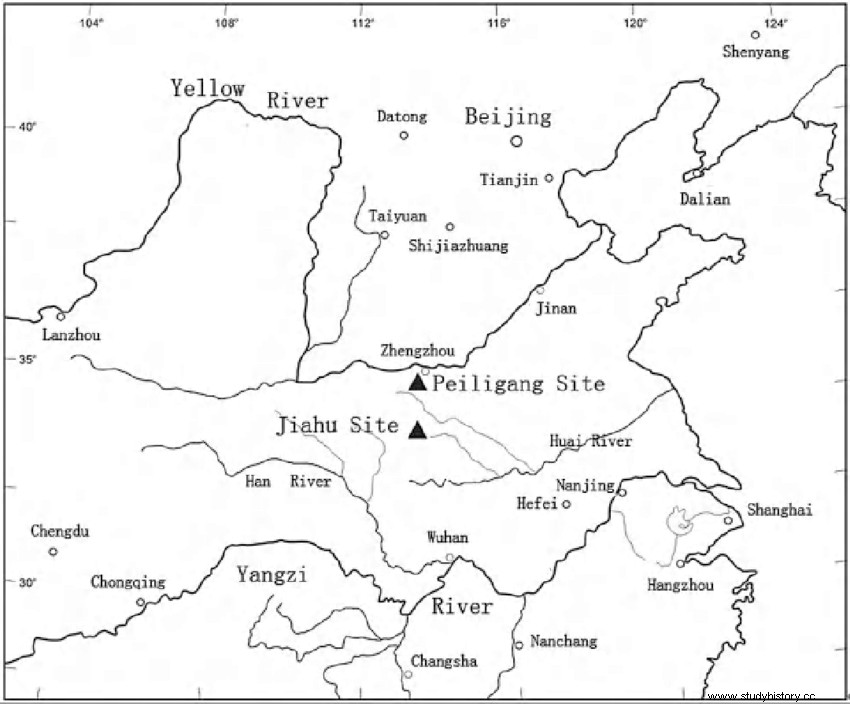To the east of China, in what is now the province of Henan, more than 100 prehistoric sites have been found, collectively called Peiligang Culture . This culture developed in the area between 7,000 and 5,000 BC, and is one of the oldest in China to produce pottery. The name comes from the first settlement discovered in 1977 in the town of Peiligang.
A little further south, in Jiahu, another Neolithic site was found in 1999. Some researchers consider it to be part of the Peiligang culture, given the many similarities between the settlements. But others say the differences are substantial enough to consider Jiahu a different culture. For example, the fact that it is the only one of all the sites where there is evidence of rice cultivation. And in fact Jiahu predates the Peiligang settlements by several centuries.

But Jiahu is special for another find. During the excavations, several tortoise shells were found, buried alongside human remains, in 24 graves. The peculiar thing about the shells is that there were carved symbols on them, dating between 6600 and 6200 BC. This preceded the first forms of Mesopotamian writing by more than 2,000 years.
A total of 16 different symbols were identified, without their meaning having been deciphered until now. Some experts believe that they bear similarities to a writing system used thousands of years later during the Shang dynasty (1700–1100 BC), known as the Oracular Bones . But others consider them proto-writing, that is, symbols that cannot be considered as writing itself, but may be the origin of its development.

The Oracular Bones There are more than 200,000 animal shoulder blades and tortoise shells on which inscriptions were found, considered the oldest corpus of archaic Chinese writing, and which, after being deciphered, revealed important historical information, such as the complete genealogy of the Shang dynasty.
The signs representing the eye and the sun in the oracle bones , for example, could derive from one of the Jiahu symbols. Likewise, the presence, by comparison, of the numerals 8 and 20 has been proposed. But they are only hypotheses that are not shared by all historians. The more than 5,000 years of distance in time from the symbols of Jiahu to the oracular bones make it difficult for them to have a connection.

Together with the shells of Jiahu, a multitude of small grouped pebbles were also found. The researchers proposed in the presentation of the discovery in 2003 that the shells may have originally contained the small stones, being used as a kind of rattles in shamanic rituals.
But Jiahu would still have another surprise in store for archaeologists. In the same tombs where the shells were found, there were flutes made of bones, considered today the oldest known musical instruments.
